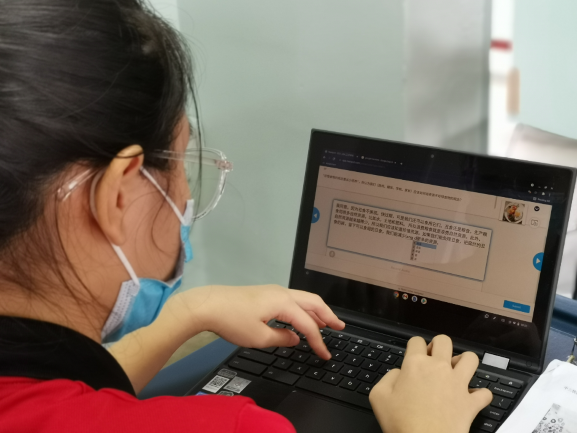Learning Chinese – a Fresh Approach to Reading and Writing
16 Sep 2008
This is the fourth article in Schoolbag’s series of 10 features on the primary school Chinese Language curriculum. Read the previous ones here.
An earlier version of this article was published in Lianhe Zaobao on 10 April 08. For a Chinese version of this article, click here.
“Look, Ma! I can write ‘hand’ in Chinese! Today, Mrs Lee also taught me to recognise the characters that form the word ‘homework’. It’s so easy to remember just by learning the parts that make up each character!”
Hands up, all who’d welcome such enthusiasm from your child after school everyday. Thanks to the new Primary 1 and Primary 2 Chinese Language curriculum, such scenes could be happening in homes already. For primary school children, even those from English-speaking homes, learning Chinese can now be both easy and exciting, as well as an experience that they truly relish.
So what’s changed?
Recognise and remember
Flip open a Primary 1 Chinese Language textbook, and you’ll notice that at the end of the main passage in a chapter, there are two rows of words: “Characters I can recognise”?“???”? and “Characters I can write”?“???”?. At the end of their Chinese lesson, students are supposed to be able to correctly pronounce the words in the first row, understand their meanings and distinguish their forms. These lessons act as a foundation to help pupils identify and read simple but key Chinese characters, before they move on to more complex characters.
On their part, teachers will guide pupils in understanding the meaning of the characters and how they are used in the context of the passages. We call this approach “teaching characters through words, and words through sentences”, as students will learn to recognise each character within the context of its usage rather than as an isolated unit. This makes it easier for pupils to remember the characters, as well as how they are used in speech and writing.
During the lesson, pupils will not be asked to simply memorise the characters. Instead they can use their imagination to think of fun and interesting ways to remember the form and meaning of each word.
Writing it right and writing it well
The row “Characters I can write” lists characters that pupils are expected to know how to write correctly, on top of being able to recognise and read. Primary 1 pupils will be taught to execute the basic strokes, maintain a proper sitting posture and hold the pen correctly. As they master the basics, pupils will move on to simple Chinese characters and words that they will frequently encounter during conversations and reading.
Teachers will also display characters written by the pupils to allow them to comment on each other’s writing as a way to encourage them to take the practice seriously. This will encourage pupils who have performed well while serving as a way to motivate others
Not all the words in the “Characters I can recognise” row will be included in the “Characters I can write” row for the same passage. Pupils may only be required to learn how to write some of the “characters I can recognise” when they come across the word again in a future lesson. We have structured the lessons with such sequences so that the pupils would have a manageable learning load for each chapter.
In addition, lessons will have “Meet-once characters”?“???”? that pupils need only understand within the context of that lesson. These characters are embedded in the text and not specially marked out. But pupils will have no difficulties in reading them as hanyu pinyin is provided.
Learning on their own, with imagination
Our aim in encouraging pupils to recognise more Chinese characters is to boost their ability to read earlier and lay a strong foundation for independent reading skills. To help with their learning, lower primary school pupils will receive a set of cards containing characters from the “Characters I can recognise” category. Teachers will also conduct word and computer games, classroom activities and picture presentations to reinforce the textbook lessons. These games spur pupils to use the characters in a relaxed and fun setting as they role-play and construct sentences using the words they have learnt.
Children today enjoy a more systematic approach to learning that builds up their language ability in ways that are both interesting and rigorous. After all, what really matters, as pupils start off on what we hope will be a lifelong relationship with the Chinese language, is that they learn to effectively recognise, write and use Chinese characters whenever they need to.
How to play games with Chinese character cards with your children at home
The new Chinese character cards aren’t just for class; parents can use them together with their children in character recognition games at home. Here’s some suggestions for ways to have fun with Chinese with your child:
- “Guess the character”: Cover up the card leaving only one corner visible and ask your child to try to guess the character.
- “Flip the card”: Cover up the card and let your child ask questions or you can provide hints (e.g., describe the form, the strokes and the component elements) to help the child guess the character; flip the card over after the child identifies the character correctly.
- Read out a character rhyme or riddle, and ask the child to find the correct card.
- “Matching cards to pictures”: Show the child a picture and let him or her find the corresponding character card.
- “Pick a card”: Let the child pick a card and read out the character and use it with another character to form a word at the same time.
Contributed by:
Mdm Liew Jee Hong
Subject Head
Nanhua Primary School
Mdm Teo Siaw Ee
Chinese Language Curriculum Planning Officer
MOE
?????????
“???????‘?’????????????????”
“????‘???’????‘?’?????‘??’?‘?’?‘?’?????‘??’?‘?’?????????”
????????????????????????????????????????????????2007????????????????????????????
????????????????????????????“???”?“???”???????????????????????????
?????????
????????????????“???”??????????????????????????????????????????????????????????????????????????????????????????????????????????????????????????????????????????????????????????????????????????“?????????”???????????????????????????
“???”???????????????????????????????????????????????????????????????????
?????????????????“???”?????????“???”???????????????????????????????????????????????????????????????????
???????“???”?????????????“???”?????????????????????????????????????????????????????????????????
??????
????????????????????????????????????????“???”???“???” ??????????????“???”???????????????????????????????????????????????????????????????????“????”????“???”??????????????“???”???????????????“???”???
??????
????????????????????????????????????????????????????????“???????????????????????”??????????????????????????????????????????????????????????????????????????????????
?????????????????????????????????????????????????????????????????????????????????????????????
?????????“???”???
????????????????“???”????????????????????????????????????????????“???”??????????????????
- ?????“???”??????????????????
- ????????????????????????????????????????????????“???”?
- ?????????????????“???”?
- ??????????????????“???”?
- ???????????“???”???????????????“??”?“?”???????????????????
?????????????
????????????
????????????
???2008?8?18?








.jpg)
